Our interiors must work visually and be cost effective to construct. We fuse this commercial approach with circular interior design principles. This means we ensure our practice and your space are as sustainable as possible. The benefits of circular interior design are:
Lower material costs
The best way to cut the cost of materials is to not buy them in the first place. Firstly we size and detail the furniture and fixtures we design to get as many pieces from one sheet as possible. We also work in collaboration with joinery companies to reuse what would normally be considered offcuts. It can cut your timber costs by more than half. When we designed the Zero Waste Shop for Winchester University picture below, we worked with the joinery contractor to use kitchen unit offcuts removing more than 60% of the sheet materials purchased for the build.
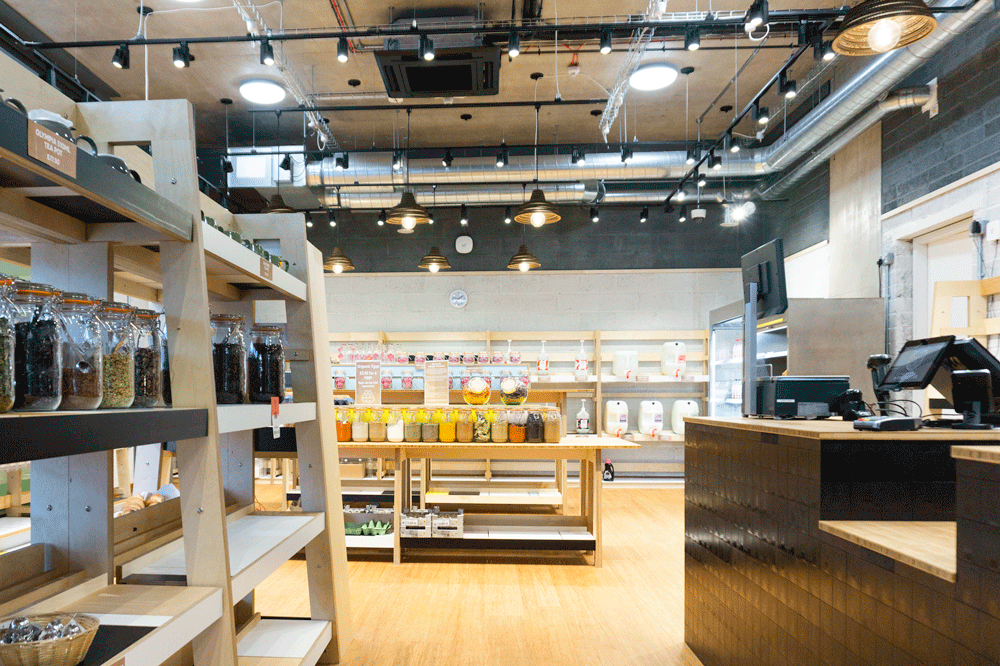
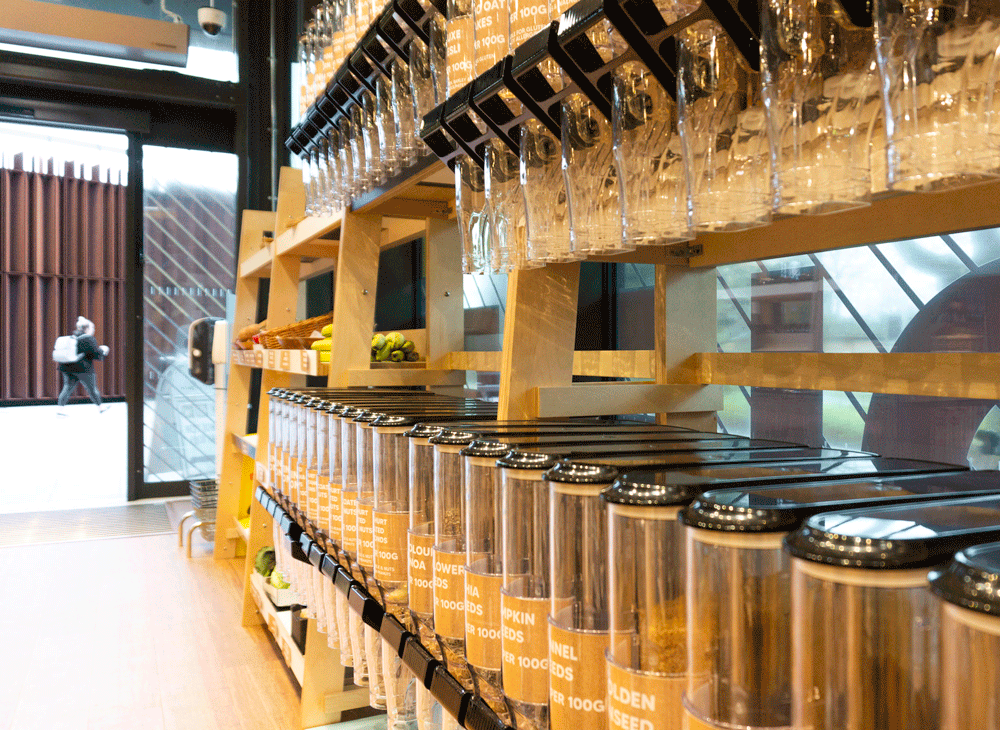
Shorter build time on site
With Circular Interior Design, interior fittings can be delivered and pushed into place. This innovative approach is new to us. But our clients are really starting to benefit. Comparing two seating fixtures helps demonstrate how.
The fixed seating run below on the left was designed for Natural Fit in Tunbridge Wells. We designed and fitted the seat the traditional way. It has a built-in base that took a few days to install on site. We added an upholstered seat and back that were made once we had confirmed the site dimensions.
The next right hand photo shows a fixed seating run for the brand’s next site, Natural Fit Hove. The seating does the same job as the first site, but it was delivered and positioned within a few minutes. Taking a circular approach demonstrably cuts labour time and costs. And it creates stunning results.
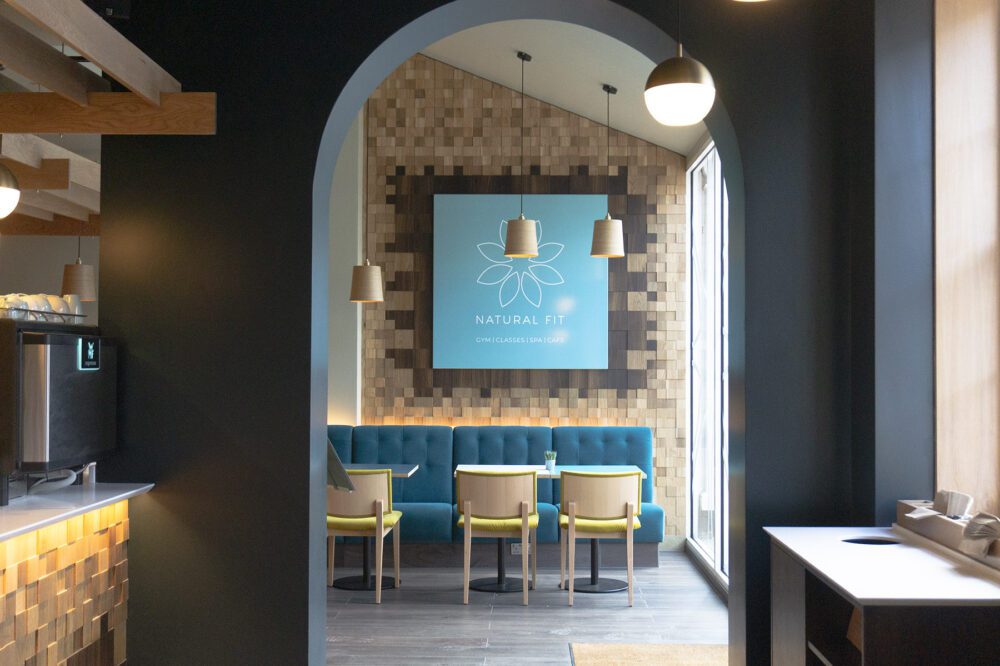
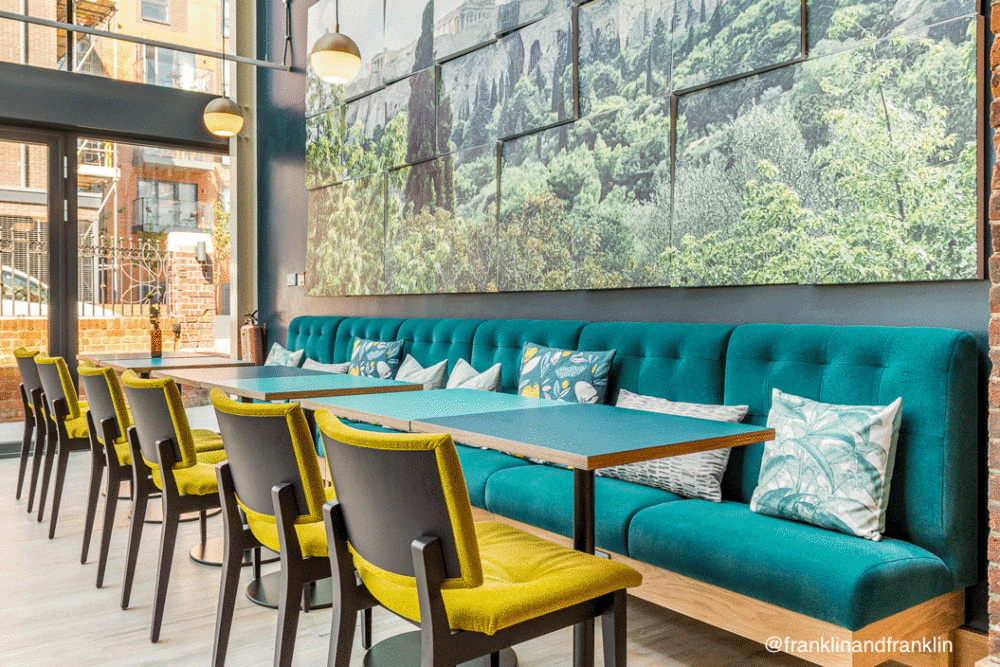
This type of fixed seating does require manufacturing time at the joiner’s. But it’s a more efficient way for the carpenters and upholsterers to work. Constructing furniture off-site means it can be done whilst the shell contractor is laying the floor or fitting lighting above where the fixed seating will go. It also reduces the number of people on site, improving on-site safety.
An more flexible interior
Things don’t always stay the same! In the past, interior designers have been guilty of building everything with a focus on permanence. So if you need to adapt your interior to include more seating or add a bar extension, you have to close and get the joiners in for a few days. With circular design principles this isn’t necessary. This reduces the cost and downtime of adapting your interior.
Restaurants, bars, coffee shops and retail units are constantly evolving. We design each element to be as flexible as practically possible. This means if you need to change your business model you have more freedom to adapt your interior. The images below show Capsule Records a record shop / coffee shop we designed in Hove. Some of the floor mounted racks are on wheels and the wall display units are on split battens that can be relocated easily. The ochre sofa was fitted in sections and most of the lighting is on tracks. All of this means if the shop doesn’t work because of location issues or they need to expand into another unit, they can easily relocate most elements of the interior. All of the above was fitted in a matter of days as well making the build quicker.
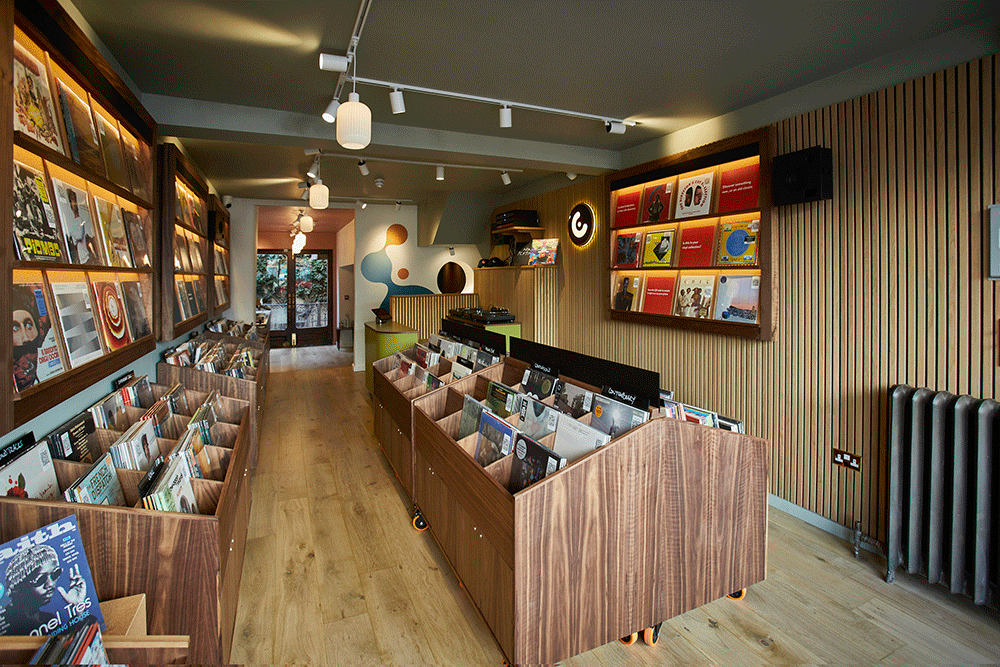
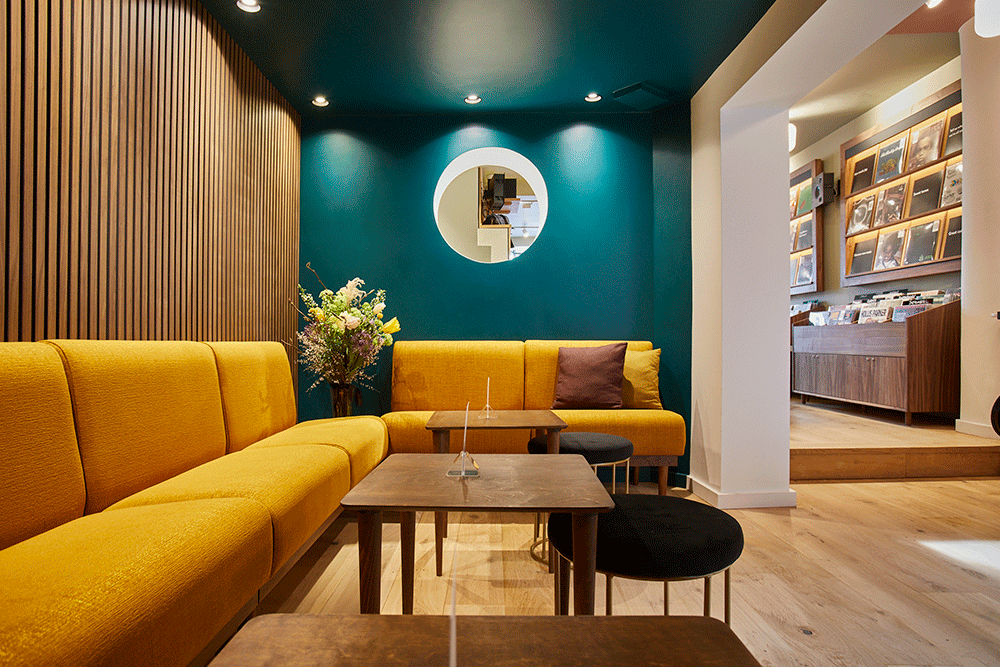
Designing a sustainable future
There are other ways to make an interior design more sustainable. We use materials with sustainable credentials where possible. These are either inherent or they are manufactured to reduce their environmental impact.
To minimise energy and water usage we pay close attention to the layout of services. With clever planning you can reduce waste and cut your carbon footprint.
This is an approach we can all work towards, learn more about and develop. We are excited about working with like-minded people. If you’re interested in the circular economy and how it integrates with design, take a look at this article.
In a time of climate change we can all do better. Our circular design approach makes sense commercially and environmentally. And it opens up rewarding opportunities. This is the future of interior design. You can be part of it.
To find out how we can make your interior more sustainable, get in touch via our contact page.